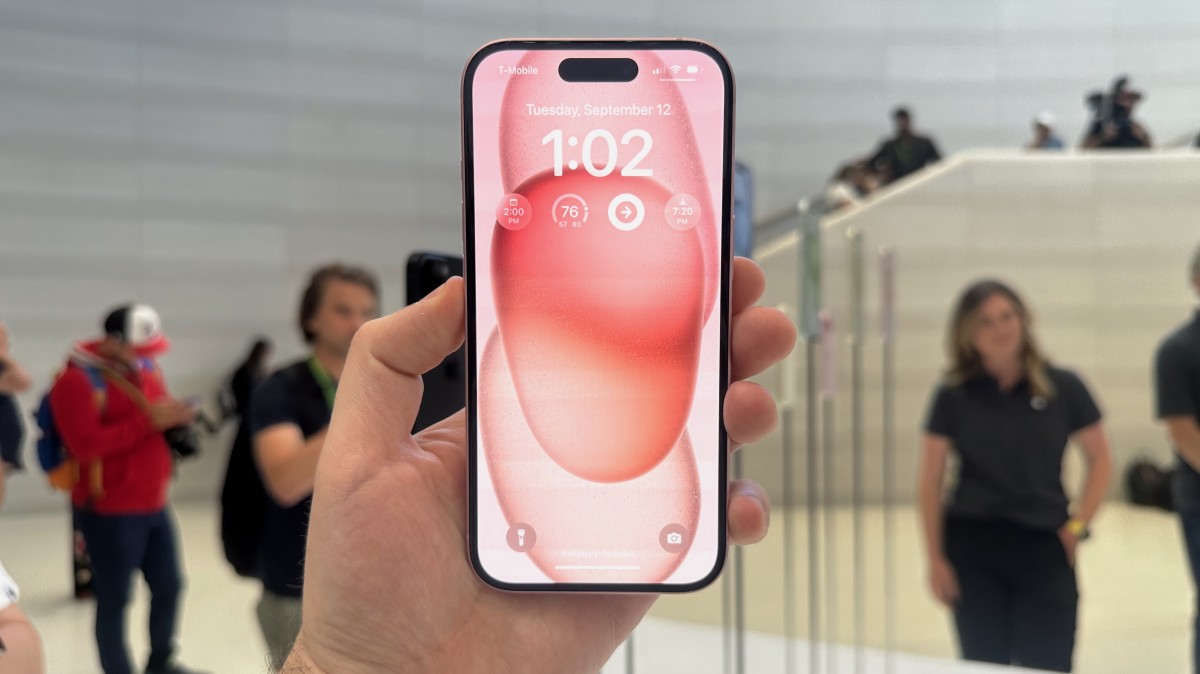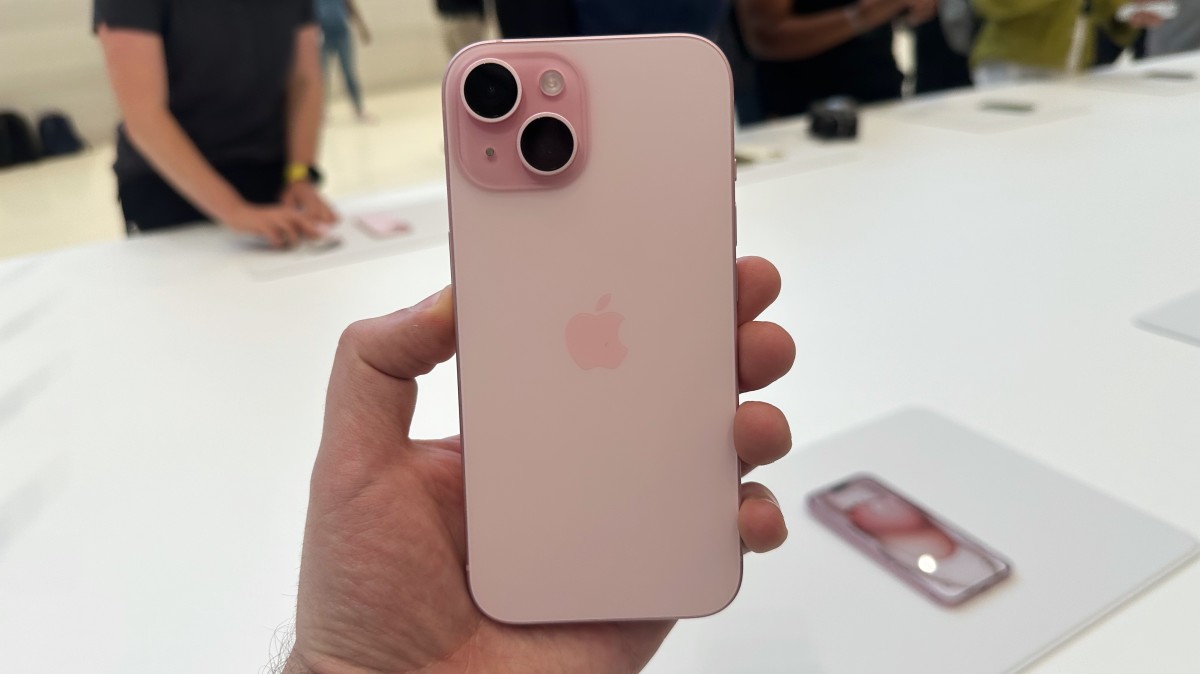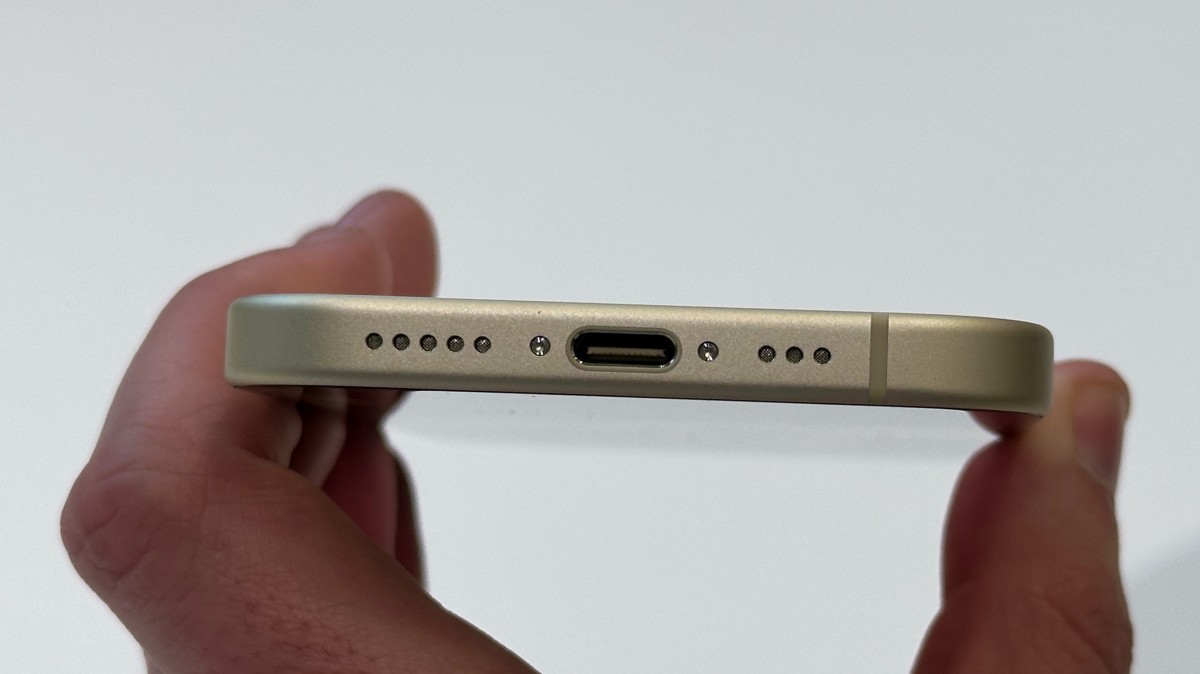
The Arena Media Brands, LLC and respective content providers to this website may receive compensation for some links to products and services on this website.
Now that Apple’s iPhone 15 and 15 Plus are official, and I had the chance to check them out after the special event, these two phones are showcasing value. While they keep a similar form factor and the same pricing structure as the 14 and 14 Plus, these step things up with three major additions.
The Dynamic Island, a 48-megapixel main camera, and the A16 Bionic chip breathe fresh air into the standard iPhone 15s. More critically, these were some of the real highlights of the 14 Pro and 14 Pro Max, which makes the latest 15s a bit more Pro without the extra tax. Just like the 15 Pro and 15 Pro Max, USB-C is now the only port here.
I’ll unpack my first impressions ahead but know that the iPhone 15 and iPhone 15 Plus go up for preorder on Sept. 15 at 8 AM ET. Carriers like Verizon and AT&T, as well as Apple directly, will offer some pretty strong trade-in deals.
For either of these, you can get up to $800 in credit by trading in your current or an older phone. Just know that those values are dependent on the condition of your trade-in. You can also opt to lock in the trade-in value of your current device for cash with a service like Decluttr. You can see our full guide to trading in an iPhone here.
Dynamic Island is a very welcome addition

I think we all had a feeling that Dynamic Island wouldn’t live as a Pro exclusive forever, and I am really glad it’s on the iPhone 15 and iPhone 15 Plus. Just like with the 14 Pros, it’s a replacement for the classic Face ID notch and is a pill-shaped cutout near the top of the 6.1-inch (on iPhone 15) or 6.7-inch (on iPhone 15 Plus) screen.
It still contains all the technology needed to power Face ID for secure authentication, like the front-facing 12-megapixel camera and the TrueDepth sensor stack. Still, since it’s built into the display, it’s like a mini display inside the larger one.
When you’re playing music, it turns into a “Now Playing” bar, letting you control playback. When you’re on a call and swipe up to go to another app or your home screen, it’ll show you how long the call’s been and a glowing trackbar that shows when someone is speaking.
Related: Here's how Apple iPhone trade-ins work to get the most value
These are all core use cases, but third-party developers have rolled out some great ones. For avid sports fans, some apps can show live sport scores or even play-by-play up-top. Frequent air travelers can use Flighty to get live updates on their flights, including real-time delay reports, at the top.
Now that Dynamic Island is on the iPhone 15 and 15 Plus, with likely many more folks getting their hands on it, we’ll hopefully see even more applications rollout support.
Likely aiding in the fluidness is the arrival of Apple’s A16 Bionic. While it’s no longer the top iPhone chip in Apple’s lineup, it’s still plenty fast and delivers an excellent experience within iOS.
After all, the iPhone 14 Pro and 14 Pro Max a year later are not slow phones. It’s a welcomed arrival and will keep the iPhone 15s running for years.
A major upgrade to the main camera

Apple’s iPhone 15 and 15 Plus are saying bye-bye to a 12-megapixel camera in favor of a new 48-megapixel lens. It’s not the same as what Apple shipped on the 14 Pro and 14 Pro Max, but it does deliver a more versatile experience. With the 15 or 15 Plus, you can capture full-sized 48-megapixel shots, but by default, it will deliver a 24-megapixel shot. Why? Well, it will save space on your iPhone, and Apple’s (AAPL) -) image pipeline here combines pixels for a more detail-filled image.
True to the iPhone, you can expect images to be accurate with a big emphasis on not over-exposing or wildly changing up colors. You also won’t need to do much work as the iPhone 15 or 15 Plus does the heavy lifting, leaving you to simply hit the shutter button to capture a shot.
There are some software enhancements, including a major update for Portrait mode, as you no longer need to be in that mode to capture that shot.
The iPhone can now recognize when a person, dog, or cat is in the frame and capture the necessary data to let you adjust the focus afterward and turn a standard shot into a Portrait shot.
All of this comes together to make one of the most dependable smartphone cameras, likely even more essential and a huge point of value in the iPhone.
The switch to USB-C

While it might sound daunting or scary on paper, the switch from Lightning to USB-C as the port on the iPhone is likely one for the better. It’s a move to a universal standard and likely the same port that some other devices you own.
Google’s Pixel and Samsung’s Galaxy smartphones all use USB-C. Similarly, most iPads and MacBooks also use USB-C. Apple’s includes a braided USB-C to USB-C cable in the box with each iPhone 15. It should be more durable than the typical cable and is plenty to charge your device. Remember a USB-C plug like Apple’s 20-watt or a third-party one from Anker or Nomad for proper power.
Related: Apple’s AirPods Pro have a new case (and, yes, port), but they're also way more durable
You may also want to look at some third-party USB-C cables, either for more length, an extra durable option, or for some color. Here are a few of our favorites.
- Anker USB-C 643 Flow Cable, 6-feet, $14 (was $22) at Amazon
- Apple USB-C to USB-C 2-meter Cable, $19 at Amazon
- Nomad Sport USB-C Cable, $25 at Nomad
- Nomad Kevlar USB-C Cable, $30 at Nomad
The iPhone 15 and iPhone 15 Plus also support the Qi wireless charging standard and Apple’s MagSafe. The latter is a circular charging puck with magnets that ensure proper alignment with your iPhone. This way, you don’t place your phone down, fall asleep, and wake up with no power.
Prices are accurate and items in stock at time of publishing.







